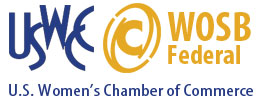
The Importance of Employee Onboarding: Suggestions from James Silliman, Cofounder of Keystone Medical Group
Employee onboarding is a critical step in the success of your team members, which ultimately impacts the success of your organization. Unfortunately, too many organizations fail to recognize this.
There is plenty of research out there that shows that a good onboarding experience will impact employee retention, but it affects so many other areas as well. While we’ve looked at plenty of statistics about onboarding, we thought it might help to talk to an expert.
James Silliman is the cofounder of Keystone Medical Group. In our brief chat, he made some excellent points about the onboarding process that we think are worth sharing. He feels strongly that a good onboarding process is essential to cultivating a healthy work environment (we agree 100%). He also gave us some insight into his own personal philosophy on onboarding. Needless to say, we learned a lot from this conversation, and we think there’s some valuable information here.
You can read the full interview below.
Tell us about your background. What do you do?
I have been focused on medical operations and business development in hearing healthcare for 13 years. I partnered with some of the best minds in hearing healthcare to form Keystone Medical Group in 2017. We have over 80 members, but that still makes us a smaller group than the larger manufacturer-owned groups.
We believe that we are only as good as the good we do, the impact we make in hearing healthcare. So, when people ask, “What makes you different?” the answer resides in the many specific examples of where we have helped our members, our people, and our manufacturing partners to achieve remarkable goals, solve complex problems, or make meaningful progress.
Deeper still, it is in the beliefs, behaviors, and a fundamental sense of purpose that underpin all that we do. With our hard work and commitment to making a real difference, our membership continues to grow, yet our shared culture remains the same.
For us, good is not good enough. We aim to be the best at all that we do – to help our members realize their ambitions, to make a positive difference in hearing healthcare, and to maximize the success of our people (employees, members, and manufacturing partners). This drive energizes the commitment that runs deep through our every action. That is what makes us truly different at Keystone. Not our size, where we are, nor what services we offer. What really defines us is our drive to make an impact that matters in hearing healthcare.
Onboarding is such a broad term, isn’t it? What do you consider onboarding?
I agree. I have worked with some organizations that think onboarding merely is offering someone the position within their organization and having that person accept.
To me, onboarding is creating a path that systematically prepares the new employee to become part of the organization. This goes far beyond the person learning their day to day responsibilities. We want the employee to understand the organization’s culture, the mission, the vision, the practice philosophies on patient care, and understand the communities the practice serves. If the employee understands why their organizations do the things they do, they will have a much easier time learning how to do the things that will make them and their organization successful.
Do you think onboarding is essential in improving employee retention?
Absolutely – maybe one of the most important things. Onboarding sets the stage for that employee’s success and job satisfaction. It is the employee’s first impression of the organization. Gallup Poll in 2018 stated that 88% of companies do a poor job of onboarding. And another survey in 2013 said that 69% of employees would stay more than three years with a company if they had a great onboarding experience. Turnover is expensive and disruptive.
How does onboarding factor into patient satisfaction?
People have a hard time not wearing their emotions on their sleeves. If an employee is unhappy, unprepared, untrained, and unappreciated, you know it will affect their attitudes toward the patient and therefore affect patient care.
I was in a practice where an employee had a profanity-laced outburst in front of a patient. It was one of the more uncomfortable situations I was ever in. I cannot imagine what the patient was thinking. In talking with the owner and employee afterward, you could almost predict that it would happen. Unfortunately, there is no place for that behavior in the workplace, so that person was let go. But the fault was not 100% on that employee. The practice owner carried some of the responsibility for allowing it to get that far. When it was time to replace that person, we had a plan for training and onboarding.
How about employee development?
When an organization knows what the employees do well, they can better tailor their training. Strength-based employee development comes from the idea that some people are better at certain things than others and that really focusing on each employee’s unique strengths can create a strong and well-rounded team. Organizations are finding this style of development to be very useful. If the job requires someone to climb a tree, would you hire a squirrel or try to train a horse? Set clear goals, communicate, show appreciation, and stay the course with the onboarding plan.
If there are no goals, no expectations, no training, coaching, or performance feedback, you are just fueling the fires of failure.
Do you think most practices are equipped to create a successful development roadmap for their employees?
I believe that every practice can be successful onboarding, but not many are equipped to do it properly. There needs to be effort and planning. Does the employer have a full job description stating all the responsibilities of the employee? Are there processes and procedures the person needs to follow? Who is responsible for the training? Is time set aside to focus on training? Are you making them “drink from a fire hose,” or are you allowing them to master a skill before moving on to the next role or responsibility?
Each employee processes information differently. You must be speaking their language to get them to where they need to be.
When an owner or manager approaches me with concerns about a new employee, I will work with both the employee and the manager to understand where there is a breakdown. I would say that much of the responsibility for the breakdown is with the manager.
What about employee evaluations? Are those beneficial? Do they drive employee engagement?
There is almost a fear, from both the manager and employee, about evaluations. Evaluations are formal opportunities to provide feedback for both parties. An employee deserves to know how they are performing towards their responsibilities and job description. They also deserve a chance to communicate what needs they might have to perform better. It is an opportunity to identify where additional training or coaching is required. It is also an opportunity to build confidence in what the employee is doing well.
One of the biggest complaints from both employees and managers is that reviews are too time-consuming. This is very disappointing to hear when, in fact, we know there are easy-to-use tools and portals available to take the burden of manual work from both parties. Investing the time to communicate with your employees is vital, and it should be set as an expectation of employment.
How would you describe yourself in three words?
Today, I would describe myself as thoughtful, enterprising, and decisive.
Thank you so much for your time!

